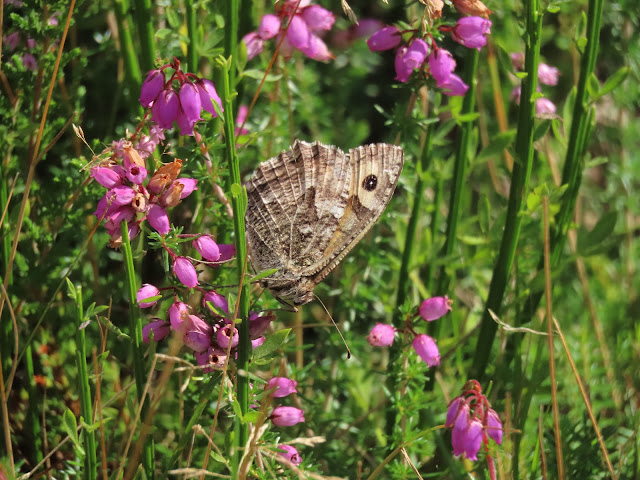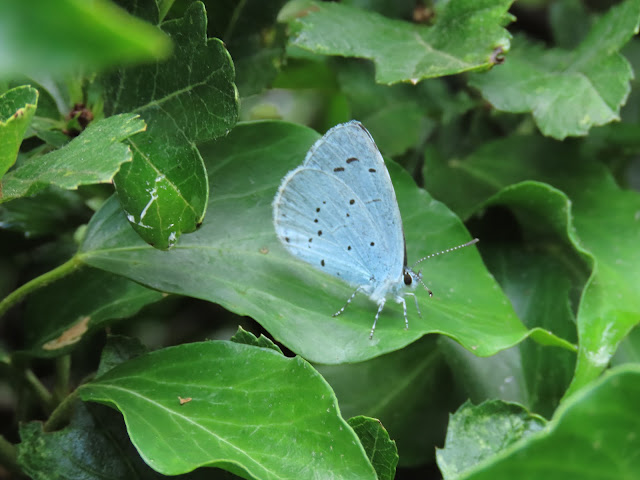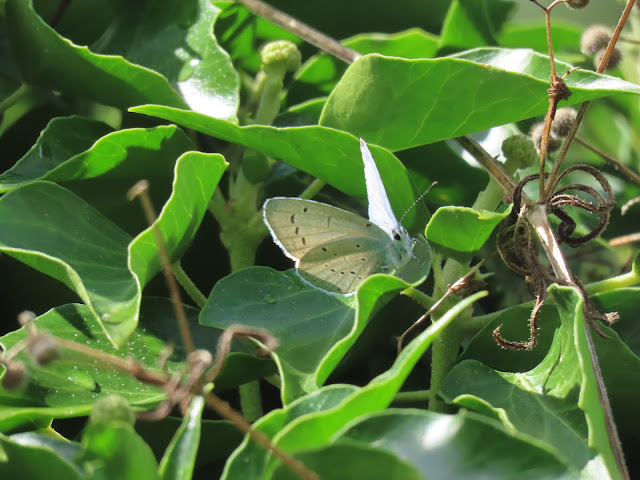With few days left of the summer holidays in which to tick off my last remaining butterflies of the season, I headed over to Otmoor to see if I could get some better views of brown hairstreaks.I arrived at 10 30 am. and turned left out of the car park and picked my way through the overgrown path of the 'Roman Road'. until I got to an area where the track opened out which was my starting point for searching for brown hairstreaks. However, despite looking high and low none were to be seen here and elsewhere along the path. Apparently two had been seen at this time yesterday and someone I met had a photo of one he had seen last week. It was suggested by another visitor that a good place to look was on a large bramble bush just past the first screen so , despite knowing this would entail a considerable walk, I elected to go, seeing as it might be my only chance. However, here too, I drew a blank though I did get some compensation with the sighting of a golden plover seen amongst lapwings from the first screen.
I retraced my steps to the Roman road, which is where I have generally seen brown hairstreaks in the past, and decided to have another look. Eventually, by training my binoculars on a fairly high up area of bramble at the back of the vegetation, I found a rather tatty specimen nectaring on a flower. At least I could tick it off now!
Another visitor came along and I showed it to him, and he told me that he had been watching one, in much better condition just before the junction with the car park . I hurried over there and found, as he had said, a female in prime condition which gave some much better photographs especially when turned toward the sun. A number of people had now arrived and were searching for hai streaks but it was time for me to leave rather than wait and see if any more were found.
Other species found at Otmoor included large numbers of ruddy and common darters, a southern hawker and a small copper.
southern hawker
spot the golden plover!

small copper
brown hairstreak
I returned to the car and whilst eating lunch, considered whether I should make the journey south to a conifer plantation at Mortimer in Berkshire to tick off my final target butterfly. I knew if I didn't go today, my next opportunity would be early September which may be too late.
So at 2.30 pm I found myself walking down a gravel track bordered with heather and conifer trees towards an area which is favoured by graylings. These butterflies are incredibly hard to spot when they land on the gravel due to their ability to close their wings and become camouflaged. so it is only when they are disturbed that you are able to follow them to where they settle, I must have seen at least a dozen in the short time I was there, and one or two settled on spikes of heather too.
These last two butterflies bring my species count for this year up to 47. However I will be looking out for reports of clouded yellows in September and October to finish my butterfly year.
grayling






















































.JPG)
